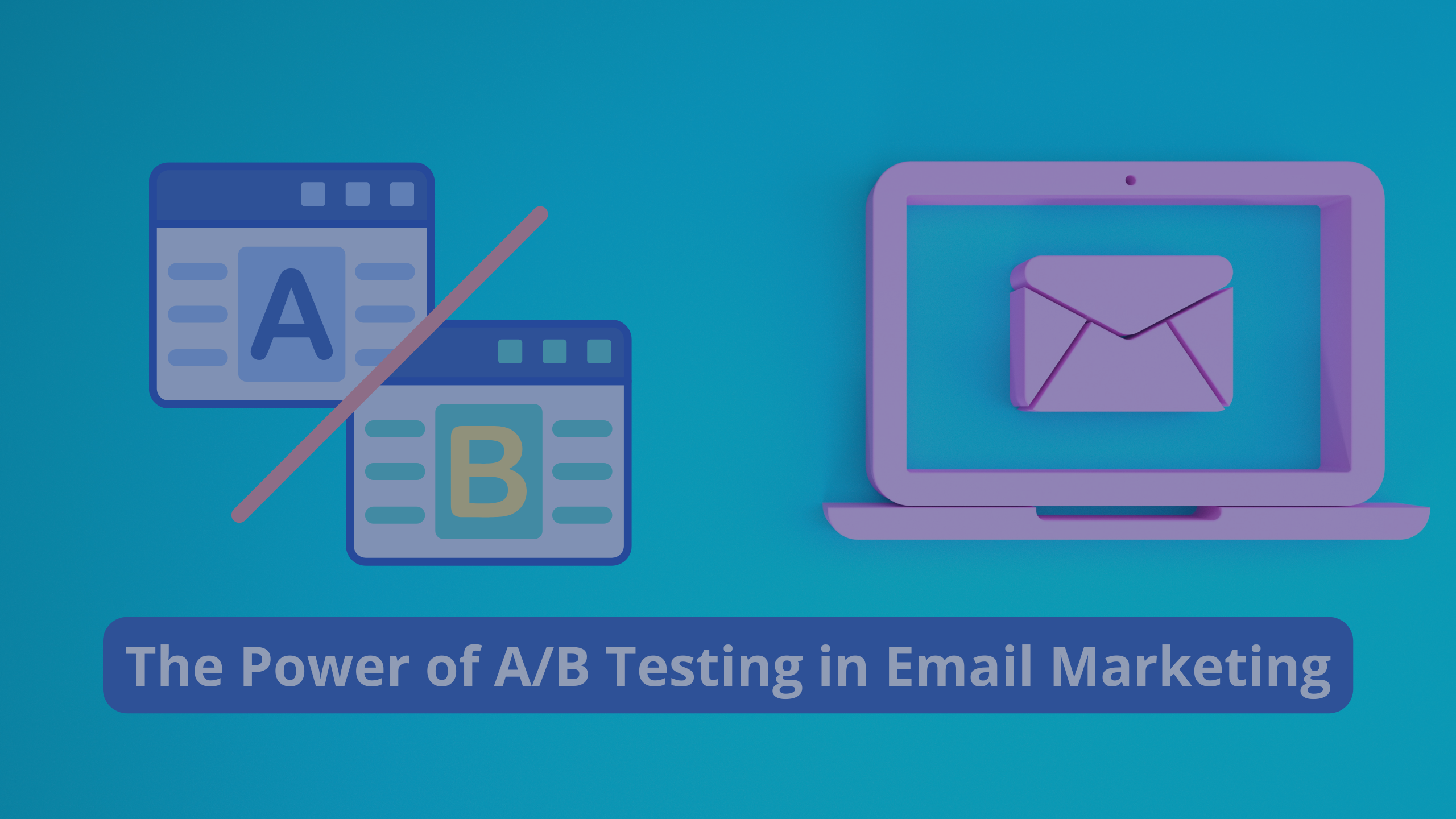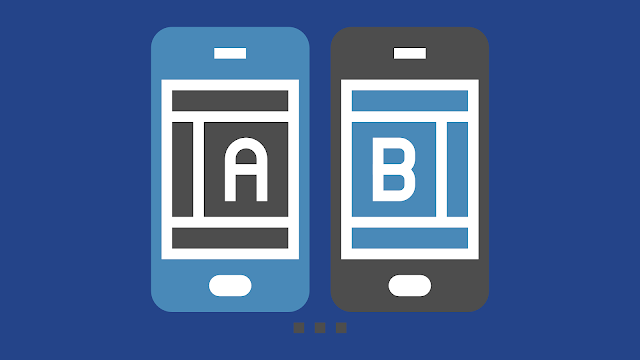Maximizing Email Engagement With A/B Testing
A/B testing involves creating two versions of an email campaign with only one variable changed in each version. The two versions of the email are sent to a sample group of subscribers, and the performance of each version is measured based on key metrics such as open rates, click-through rates, and conversion rates. The results of the test are then analyzed to identify which version performed better, and this information is used to optimize future campaigns.
The importance of A/B testing in email marketing cannot be overstated. It is a proven method for improving email campaigns and achieving better results. By testing different variables such as subject lines, email body content, and sender information, businesses can gain insights into what works best for their audience. Without A/B testing, businesses may miss out on opportunities to improve their email campaigns and increase engagement.
There are several benefits of A/B testing in email marketing. For starters, it allows businesses to identify which variables have the greatest impact on their audience. For example, by testing different subject lines, businesses can determine which subject line is more likely to get subscribers to open the email. This knowledge can be used to optimize future campaigns and increase engagement rates.
Another benefit of A/B testing is that it can help businesses avoid sending ineffective campaigns that could harm their reputation and damage their relationship with subscribers. By testing different variables, businesses can ensure that they are sending the most effective content to their subscribers.
A/B testing can also help businesses improve their overall email marketing strategy. By gathering data and insights from each test, businesses can make data-driven decisions about their email campaigns. This knowledge can be used to optimize future campaigns and improve engagement rates over time.
Setting up A/B Testing in Email Marketing
Choosing the Right A/B Testing Tool
Before setting up A/B testing in email marketing, it's important to choose the right A/B testing tool. There are numerous tools available that can help businesses conduct A/B testing on their email campaigns. Some of the most popular A/B testing tools include Mailchimp, Campaign Monitor, and Constant Contact.
When choosing an A/B testing tool, businesses should consider the features offered by each tool and select one that meets their specific needs. For example, some tools may offer more advanced testing options, while others may be more user-friendly for beginners. It's important to choose a tool that fits your business and your goals for A/B testing.
Identifying the Key Metrics to Measure
Once an A/B testing tool has been selected, it's important to identify the key metrics to measure. These metrics will be used to determine which version of the email campaign performed better in the A/B test. Some of the key metrics that should be measured include open rates, click-through rates, conversion rates, and revenue generated.
By measuring these metrics, businesses can determine which version of the email campaign resulted in the highest engagement rates and the highest revenue generated. This information can then be used to optimize future email campaigns and increase engagement rates.
Defining the Testing Criteria
Defining the testing criteria is another important step in setting up A/B testing in email marketing. This involves determining what variables will be tested in the A/B test. Some of the most common variables that are tested in email campaigns include subject lines, email body content, and sender information.
When defining the testing criteria, it's important to choose variables that have a significant impact on the audience's engagement with the email campaign. For example, testing two vastly different subject lines may provide more insight than testing two subject lines that are very similar.
Setting up the Test
After the testing criteria have been defined, the A/B test can be set up using the selected A/B testing tool. This typically involves creating two versions of the email campaign with the different variables to be tested and then sending each version to a sample group of subscribers. The A/B testing tool will then track the performance of each version and provide data on the key metrics identified in step B.
It's important to ensure that the sample group of subscribers is representative of the larger audience to ensure that the results of the A/B test are accurate. Additionally, businesses should wait until the test is complete and the results have been analyzed before making any changes to future email campaigns based on the results of the A/B test.
A/B Testing Variables in Email Marketing
Subject Line Testing
One of the most critical variables to test in email marketing is the subject line. The subject line is the first thing that subscribers see when they receive an email, and it can have a significant impact on whether or not they open the email. A/B testing subject lines allows businesses to determine which subject line is more effective at driving open rates.
Examples of Successful Subject Line Tests
Some examples of successful subject line tests include:
- Using emojis in the subject line: Emojis can add personality and emotion to the subject line, making it more engaging for subscribers.
- Asking a question in the subject line: Questions can pique subscribers' curiosity and encourage them to open the email to find the answer.
- Including a number in the subject line: Numbers can add specificity to the subject line and create a sense of urgency.
- Personalizing the subject line with the subscriber's name: Personalization can help build a stronger connection with subscribers and make them more likely to open the email.
- Keeping the subject line short and to the point: Short subject lines are more likely to be read in their entirety and can make the message more clear and concise.
Tips for Writing Effective Subject Lines
When writing subject lines for A/B testing, it's important to keep the following tips in mind:
- Use action-oriented language to create a sense of urgency
- Keep the subject line short (50 characters or less)
- Test different types of subject lines (questions, statements, emojis, etc.)
- Personalize the subject line whenever possible
- Use A/B testing to determine which subject line is more effective
Sender Name and Email Address Testing
The sender's name and email address can also have a significant impact on open rates and engagement. Testing different sender names and email addresses can help businesses determine which option is more effective at driving engagement.
Importance of Sender Name and Email Address
The sender's name and email address are important because they provide subscribers with an idea of who the email is coming from. Using a recognizable sender name and email address can help build trust and encourage subscribers to engage with the email.
Best Practices for Testing Sender Name and Email Address
When testing sender names and email addresses, it's important to keep the following best practices in mind:
- Use a recognizable sender name (such as a company name or individual's name)
- Use a professional email address (such as [email protected] or [email protected])
- Test different sender names and email addresses to determine which option is most effective
- Analyze data from A/B testing to determine which sender name and email address is more effective
Email Body Testing
In addition to testing subject lines and sender names/email addresses, testing email body content is also crucial to the success of the email marketing campaign. A/B testing different email body content can help businesses determine which content is more effective at driving engagement.
Examples of Successful Email Body Tests
Some examples of successful email body tests include:
Testing different images: Images can be a powerful tool for capturing subscribers' attention and conveying a message. Testing different images can help businesses determine which image is most effective at driving engagement.
Testing different calls to action: Calls to action are a key component of any email marketing campaign. Testing different calls to action can help businesses determine which call to action is most effective at driving conversions.
Testing different layouts: The layout of an email can have a significant impact on how subscribers interact with the content. Testing different layouts can help businesses determine which layout is most effective at driving engagement.
Testing different content lengths: The length of an email can also have an impact on engagement. Testing different content lengths can help businesses determine which length is most effective at driving engagement.
Best Practices for A/B Testing in Email Marketing
A/B testing is a valuable tool for improving the effectiveness of your email marketing campaigns. However, in order to get the most out of your A/B testing efforts, it's important to follow some best practices. Here are some of the most important things to keep in mind:
Test One Variable at a Time
When you're conducting A/B tests, it's important to focus on testing one variable at a time. This means that if you're testing your subject lines, you should only be testing different subject lines and nothing else. Testing multiple variables at once can make it difficult to determine which changes are having an impact on your results.
Test with a Large Sample Size
In order to get statistically significant results, it's important to test with a large sample size. This means that you should be sending your test emails to a large enough portion of your email list to ensure that the results are reliable. If you're only sending your test emails to a small percentage of your list, the results may not be accurate.
Set a Clear Goal for Each Test
Before you conduct an A/B test, it's important to set a clear goal for what you want to achieve. For example, if you're testing your subject lines, your goal might be to increase your open rates by 5%. Having a clear goal in mind will help you to focus your testing efforts and ensure that you're making progress towards your overall objectives.
Document Your Results
Finally, it's important to document your results so that you can refer back to them later on. This will help you to identify trends and patterns in your testing data, and it will also help you to make informed decisions about how to improve your email marketing campaigns in the future. You can use tools like spreadsheets or project management software to keep track of your results and analyze them over time.
Interpreting A/B Testing Results
A/B testing provides valuable insights into the behavior and preferences of your email subscribers. However, it's important to properly interpret the results of your tests to make informed decisions about your email marketing campaigns. Here are some additional details to consider when interpreting your A/B testing results:
Understanding Statistical Significance
Statistical significance is a measure of how likely it is that your test results are due to chance. When conducting an A/B test, you should aim to achieve statistical significance to ensure that your results are reliable and can be applied to your email marketing campaigns. Most A/B testing tools will calculate statistical significance for you, but it's important to understand how this metric is calculated and what it means for your test results.
Analyzing Test Results
When analyzing your A/B testing results, you should look beyond just the overall results and consider how different segments of your audience responded to the test. For example, you may find that a new email design performed well among younger subscribers, but had a lower click-through rate among older subscribers. By segmenting your results in this way, you can gain deeper insights into how your audience is responding to your email campaigns.
Making Data-Driven Decisions
The goal of A/B testing is to make data-driven decisions about your email marketing campaigns. When interpreting your results, it's important to focus on the metrics that matter most to your business goals, such as open rates, click-through rates, and conversion rates. By using your test results to inform your decisions, you can make improvements to your email campaigns that drive better engagement and revenue for your business.
Iterating and Improving
A/B testing is not a one-time activity, but rather an ongoing process of experimentation and improvement. After interpreting your test results, you should use this information to iterate on your email marketing campaigns and continue testing new ideas. This can help you to identify even more effective strategies for engaging your subscribers and achieving your business goals.
Common Pitfalls to Avoid
When interpreting your A/B testing results, it's important to avoid common pitfalls that can lead to incorrect conclusions. One common pitfall is failing to achieve statistical significance before drawing conclusions from your test results. Another common mistake is relying too heavily on metrics that don't directly relate to your business goals, such as open rates or click-through rates. By being aware of these pitfalls and focusing on the metrics that matter most, you can make better decisions based on your A/B testing results.
Frequently Asked Questions (FAQs)
What is A/B testing in email marketing?
A/B testing, also known as split testing, is the process of comparing two versions of a marketing message or campaign to determine which one performs better. In email marketing, A/B testing involves sending two versions of an email to a subset of your email list and measuring which version generates better results.
How do I set up A/B testing in my email marketing campaign?
To set up A/B testing in your email marketing campaign, you will need to choose an email marketing platform that offers A/B testing functionality. Once you have selected a platform, you will need to identify the variable you want to test, such as the subject line or email content, and define your testing criteria. Then, you will create two versions of your email, with only one variable differing between the two versions, and send them to a subset of your email list. Finally, you will analyze the results to determine which version performed better.
What variables should I test in my email marketing campaign?
There are several variables that you can test in your email marketing campaign, including subject lines, sender name and email address, email content, images, calls to action, and landing pages. It's important to test only one variable at a time to get accurate results and to choose variables that are most likely to have an impact on your email's performance.
How long should I run an A/B test?
The length of time you should run an A/B test will depend on several factors, including the size of your email list, the complexity of your test, and the expected impact of the variable being tested. Generally, you should aim to run your test for at least 24 hours to ensure that you have a large enough sample size, but not so long that the results become stale.
How do I analyze A/B test results?
To analyze A/B test results, you will need to compare the performance of the two versions of your email against the defined testing criteria. You should look at metrics such as open rates, click-through rates, and conversions to determine which version performed better. It's also important to consider statistical significance when interpreting your results.
How often should I perform A/B testing in my email marketing campaign?
The frequency of A/B testing in your email marketing campaign will depend on several factors, including the size of your email list, the frequency of your email sends, and the goals of your campaign. Generally, you should aim to perform A/B testing on a regular basis, such as once a month, to continually improve the performance of your email campaigns. However, it's important not to over-test, as this can lead to diminishing returns and increased complexity.
Conclusion
Recap of the Importance of A/B Testing in Email Marketing
In conclusion, A/B testing is a crucial component of any email marketing campaign. It allows marketers to test different variables in their emails and make data-driven decisions that can significantly improve email performance. By testing different elements such as subject lines, sender names and email addresses, and email body content, marketers can identify what works and what doesn't work with their audience. A/B testing enables them to optimize their email campaigns, resulting in increased open rates, click-through rates, and ultimately, higher conversion rates.
Final Thoughts and Recommendations
As email marketing continues to be a popular and effective way to reach customers, it's essential to ensure that your campaigns are optimized for success. A/B testing provides a straightforward and reliable way to test different variables and improve your email performance. Remember to follow best practices such as testing one variable at a time, using a large sample size, setting clear goals for each test, and documenting your results.
Overall, A/B testing is a powerful tool that should not be overlooked by any email marketer. By implementing a robust A/B testing strategy and continually analyzing and optimizing your campaigns, you can achieve better results and ultimately drive more revenue for your business. So, start A/B testing today and see the impact it can have on your email marketing campaigns!












